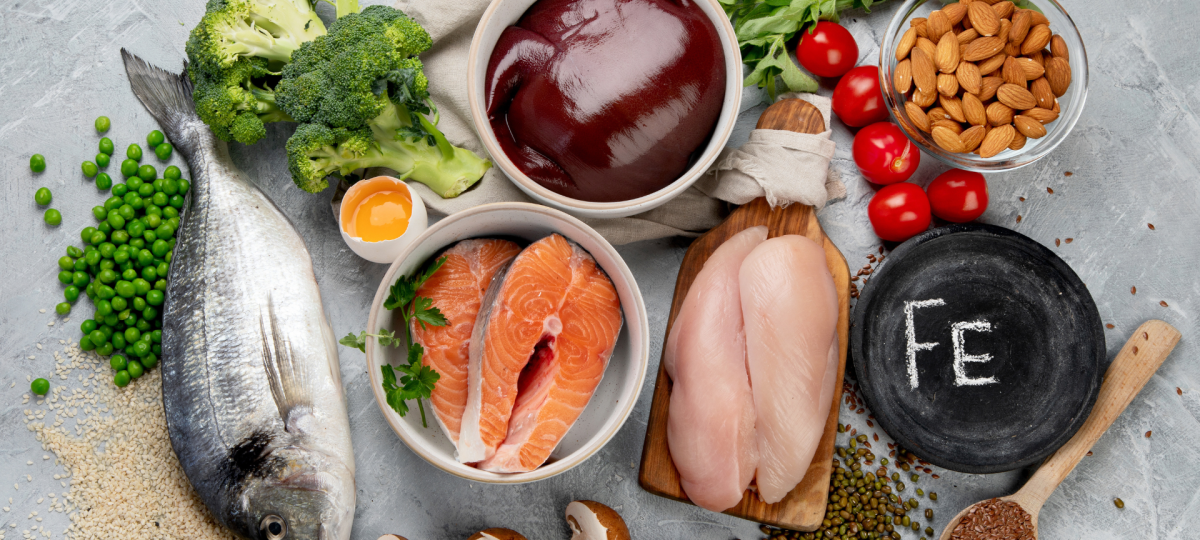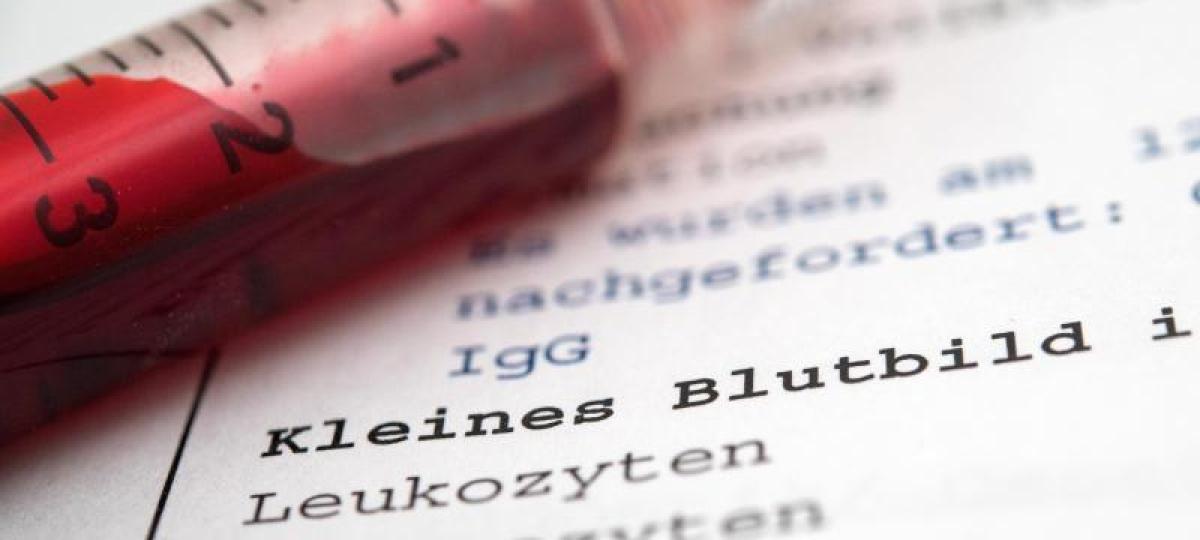40 good iron sources at an overview

Iron is a trace element that is essential for the body. For example, it is required for the transport of oxygen. Iron cannot be formed itself and is therefore absorbed through a healthy diet. Which foods contain a lot of iron?
Food with high iron content: the most important information compact
- Li): Relative List-None (&> Li): PL- (1.2EM) (&> Li): Marker: Text- (0) (&> Li): Relative (&> Li): Before: Absolute (&> Li): Before: W-3 (&> Li): Before: H-3 (&> Li): Before: BG-fire (& Li): Before: LEFT-0 (&> Li): Before: Top- (8px) (&> Li): Before: Rounded-Full My-5 « >
- Iron occurs in both animal and herbal food. The iron from animal sources is usually better absorbed in the body.
- The individual iron requirement can fluctuate strongly.
- When the iron stores are filled in the body, less iron is absorbed through food.
- An iron deficiency can lead to anemia, which can trigger symptoms such as pale and tiredness.
- With 30 mg per 100 grams, blood sausage contains a lot of iron.
- Under the vegetable foods, legumes and nuts in particular can help with iron supply, but dried fruits also contain good portions to cover the daily requirement.
- Women have an increased iron requirement during menstruation.
Food with iron: these are the top 10
- Li): Relative List-None (&> Li): PL- (1.2EM) (&> Li): Marker: Text- (0) (&> Li): Relative (&> Li): Before: Absolute (&> Li): Before: W-3 (&> Li): Before: H-3 (&> Li): Before: BG-fire (& Li): Before: LEFT-0 (&> Li): Before: Top- (8px) (&> Li): Before: Rounded-Full My-5 « >
- Blood sausage – 30 mg
- Pig liver – 18 mg
- Wheat bran – 16 mg
- Amarant (uncooked) – 9 mg
- Quinoa (uncooked) – 8 mg
- Pumpkin seeds – 8.2 mg
- Calf liver – 7.4 mg
- Hirse flakes – 6.9 mg
- Soybeans (uncooked) – 6.6 mg
- Pine nuts – 6.5 mg
How much iron does the body need through food during the day?
The body needs according to that Federal Institute for Risk Assessment (BfR) About 1 milligrams of iron a day because the same amount is excreted every day about sweat and urine. Women even have higher losses due to their menstrual period. The iron contained in food is only around ten to fifteen percent can be used for the body, which is why according to the German Society for Nutrition (DGE) For children, the following daily requirement results:
- Li): Relative List-None (&> Li): PL- (1.2EM) (&> Li): Marker: Text- (0) (&> Li): Relative (&> Li): Before: Absolute (&> Li): Before: W-3 (&> Li): Before: H-3 (&> Li): Before: BG-fire (& Li): Before: LEFT-0 (&> Li): Before: Top- (8px) (&> Li): Before: Rounded-Full My-5 « >
- Infants up to 4 months: 0.5 mg/day
- Infants (4 to under 12 months): 8 mg/day
- Children (1 to 7): 8 mg/day
- Children (7 to under 10): 10 mg/day
- Children (10 to under 15): male: 12 mg/day; Female: 15 mg/day
The DGE recommends this daily requirement for men:
- Li): Relative List-None (&> Li): PL- (1.2EM) (&> Li): Marker: Text- (0) (&> Li): Relative (&> Li): Before: Absolute (&> Li): Before: W-3 (&> Li): Before: H-3 (&> Li): Before: BG-fire (& Li): Before: LEFT-0 (&> Li): Before: Top- (8px) (&> Li): Before: Rounded-Full My-5 « >
- 12 to under 19 years: 12 mg/day
- from 19 years: 10 mg/day
According to the DGE, the daily requirement fluctuates something for women. On the one hand, the need depends on the period and whether you are in breastfeeding. Pregnant women also have an increased daily requirement. According to the DGE, women need 10 mg a day outside of their period. Otherwise the following guidelines apply:
- Li): Relative List-None (&> Li): PL- (1.2EM) (&> Li): Marker: Text- (0) (&> Li): Relative (&> Li): Before: Absolute (&> Li): Before: W-3 (&> Li): Before: H-3 (&> Li): Before: BG-fire (& Li): Before: LEFT-0 (&> Li): Before: Top- (8px) (&> Li): Before: Rounded-Full My-5 « >
- 15 to under 51 years: 15 mg/day
- from 51: 10 mg/day
- Pregnant women: 30 mg/day
- Stilling or women after birth: 20 mg/day
Good iron sources: These foods contain a lot of iron
Here you will find an overview with iron -rich foods. The data refer to 100 grams of the product and come from the Swiss nutritional database.
Meat and sausage have the highest iron content:
- Li): Relative List-None (&> Li): PL- (1.2EM) (&> Li): Marker: Text- (0) (&> Li): Relative (&> Li): Before: Absolute (&> Li): Before: W-3 (&> Li): Before: H-3 (&> Li): Before: BG-fire (& Li): Before: LEFT-0 (&> Li): Before: Top- (8px) (&> Li): Before: Rounded-Full My-5 « >
- Blood sausage: 30 mg
- Pig liver: 18 mg
- Calf liver: 7.4 mg
- Rindleber: 7 mg
- Liver sausage: 3.6 mg
- Raw ham: 2.8 mg
- Beef: 1.8 mg
- Calf: 1.1 mg
- Pork: 1 mg
At 0.5 mg per 100 grams, chicken meat contains the least iron under the common types of meat.
Fish and seafood:
If you don’t eat meat, you can also find good iron suppliers in fish and seafood:
- Li): Relative List-None (&> Li): PL- (1.2EM) (&> Li): Marker: Text- (0) (&> Li): Relative (&> Li): Before: Absolute (&> Li): Before: W-3 (&> Li): Before: H-3 (&> Li): Before: BG-fire (& Li): Before: LEFT-0 (&> Li): Before: Top- (8px) (&> Li): Before: Rounded-Full My-5 « >
- Mussel: 5.8 mg
- Sardelle in the oil: 2.7 mg
- Raw tuna: 1.1 mg
Grain products:
- Li): Relative List-None (&> Li): PL- (1.2EM) (&> Li): Marker: Text- (0) (&> Li): Relative (&> Li): Before: Absolute (&> Li): Before: W-3 (&> Li): Before: H-3 (&> Li): Before: BG-fire (& Li): Before: LEFT-0 (&> Li): Before: Top- (8px) (&> Li): Before: Rounded-Full My-5 « >
- Wheat bran: 16 mg
- Amarantes: 9 mg (cooked 3 mg)
- Quinoa: 8 mg (cooked 2.7 mg)
- Hirse flakes: 6.9 mg
- oatmeal: 3.8 mg
- Spelled flour, whole grain, type 1900: 3.6 mg
- Buckwheat flour: 2.5 mg
Nuts and cores have a high iron content:
- Li): Relative List-None (&> Li): PL- (1.2EM) (&> Li): Marker: Text- (0) (&> Li): Relative (&> Li): Before: Absolute (&> Li): Before: W-3 (&> Li): Before: H-3 (&> Li): Before: BG-fire (& Li): Before: LEFT-0 (&> Li): Before: Top- (8px) (&> Li): Before: Rounded-Full My-5 « >
- Pumpkin seeds: 8.2 mg
- Pine nuts: 6.5 mg
- Cashew: 5.9 mg
- Hazelnuts: 3.6 mg
- Almond: 3.3 mg
- Walnuts: 2.6 mg
- Paranse: 2.4 mg
- Peanuts: 1.6 mg
Vegetables:
- Li): Relative List-None (&> Li): PL- (1.2EM) (&> Li): Marker: Text- (0) (&> Li): Relative (&> Li): Before: Absolute (&> Li): Before: W-3 (&> Li): Before: H-3 (&> Li): Before: BG-fire (& Li): Before: LEFT-0 (&> Li): Before: Top- (8px) (&> Li): Before: Rounded-Full My-5 « >
- Salval pushing: 3.3 mg (still steamed 3.1 mg)
- spinach: 2.7 mg
- broccoli: 1.4 mg
- Kale: 1.3 mg
Legumes:
- Li): Relative List-None (&> Li): PL- (1.2EM) (&> Li): Marker: Text- (0) (&> Li): Relative (&> Li): Before: Absolute (&> Li): Before: W-3 (&> Li): Before: H-3 (&> Li): Before: BG-fire (& Li): Before: LEFT-0 (&> Li): Before: Top- (8px) (&> Li): Before: Rounded-Full My-5 « >
- Linsen: 8 mg (cooked 2.5 mg)
- Soybeans: 6.6 mg (cooked 2.2 mg)
- All kinds of beans on average: 6.3 mg
- Chickpeas: 5.4 mg (still cooked 1.9 mg)
Dried fruits:
- Li): Relative List-None (&> Li): PL- (1.2EM) (&> Li): Marker: Text- (0) (&> Li): Relative (&> Li): Before: Absolute (&> Li): Before: W-3 (&> Li): Before: H-3 (&> Li): Before: BG-fire (& Li): Before: LEFT-0 (&> Li): Before: Top- (8px) (&> Li): Before: Rounded-Full My-5 « >
- Rosin: 2.3 mg
- Dattel: 2.2 mg
- Apricot: 1.4 mg
- Feige: 1.4 mg
- banana: 1.3 mg
Last but not least: two eggs (about 100 grams) have 1.8 milligrams of iron. 100 grams of egg yolk even contain 5.5 mg.
Iron -containing foods: What can be better used?
According to the BFR, iron from animal foods can be used much better than from vegetable foods. This is due to the fact that iron in herbal food as the so-called « non-hemeis » occurs in a three-value form (Fe3+). It must first be converted into a soluble form (FE2+) in the body. Iron from animal source already occurs in a two-value form and, according to the BFR, can therefore be « 2 to better absorbed ».
Which foods can interfere with iron absorption?
According to the BFR, iron absorption from animal foods is hardly influenced by other substances. The situation is different for vegetable iron. These fabrics can inhibit the recording:
- Li): Relative List-None (&> Li): PL- (1.2EM) (&> Li): Marker: Text- (0) (&> Li): Relative (&> Li): Before: Absolute (&> Li): Before: W-3 (&> Li): Before: H-3 (&> Li): Before: BG-fire (& Li): Before: LEFT-0 (&> Li): Before: Top- (8px) (&> Li): Before: Rounded-Full My-5 « >
- lignin
- Oxalic acid
- Phytat
- phosphate
- Tanin
Tanin is mainly included in black tea, coffee or red wine. Lignin, oxalic acid and phosphate occurs in grain, rice and legumes. The high iron content of lenses and the like should be enjoyed with caution – especially because they lose a lot of iron when cooking.
By the way: in the Pregnancy increases the iron requirement. Even with the Taking iron There are a few things to consider.







